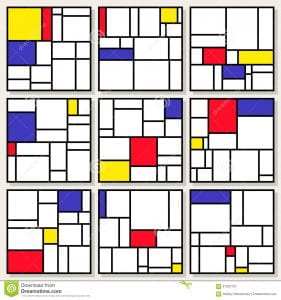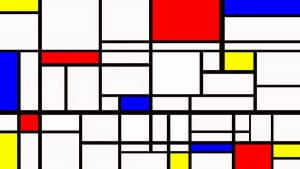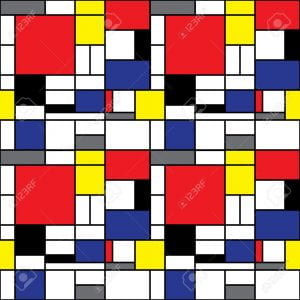Name: Mondrian Chess
Material:
- A base board
- Pieces of Mondrian paintings (which is called “block” in this game)

(Figures above are several examples of the “easy level” of Mondrian Chess)
Rules:
- Players play rock paper scissors to decide who goes first.
- Each block of color is one chess piece in this game. They are separated and are taken down from the base board.
- In each turn, one player select one piece of block and put it at one of the corners, then the other player put another piece of block, which must has at least two sides touched the side of chessboard or the blocks already existed.
- When one player put down his/her block and the opponent has no place to put down another block, then the player who put down the last block wins the game.
- Depends on different sizes of the base board, this game can include 2-8 players.
Here are some more examples of “higher level” of the Mondrian Chess:


In this game, you don’t have to try to put the blocks in the same way as the original painting. However when you try to mess up the chessboard, it may make both of your opponent and you difficult to continue this game, so you need to decide when to start the “attack” based on the shape of blank on the board and the shape of the rest of the blocks.
Yue Yu
